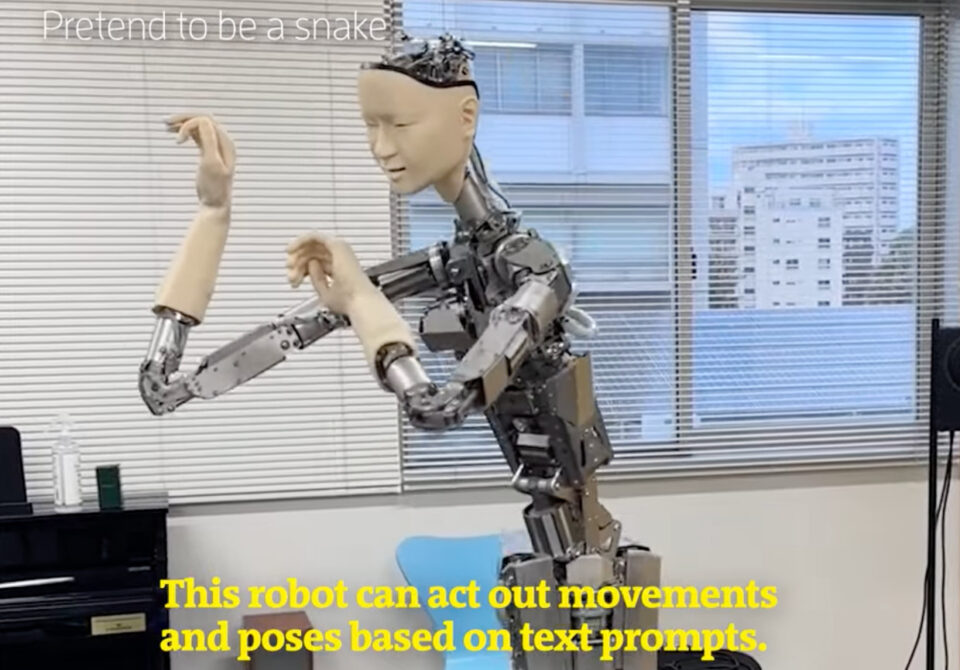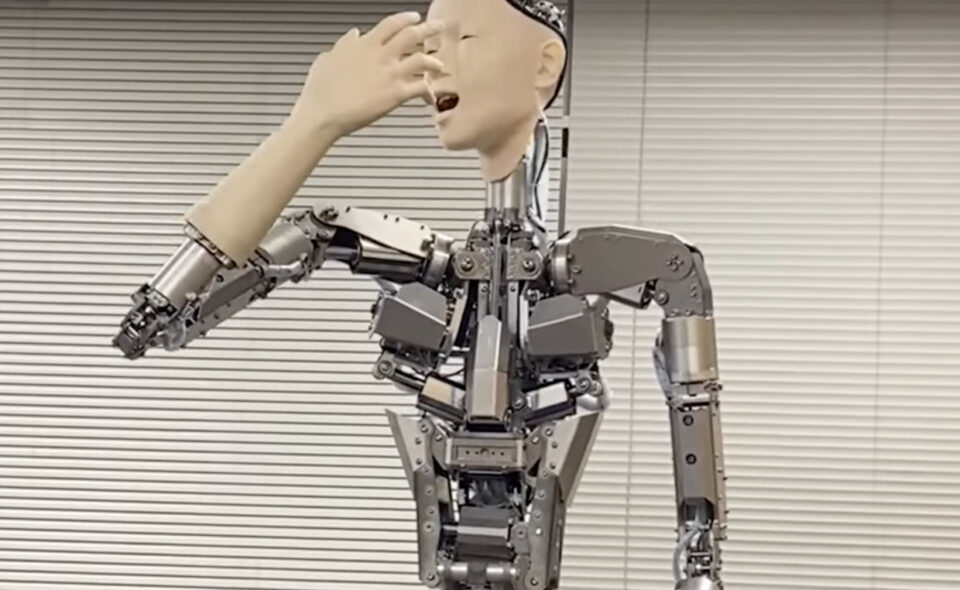
Using GPT-4, the University Of Tokyo’s Alter3 humanoid robot can autonomously act out actions given to it as prompts in a style not unlike a game of charades. Alter3 uses GPT-4’s large language AI model to convert the human-provided prompts into code for its movement, and the result, while rather unsettling to watch, is quite impressive. And it’s certainly a nice change of pace from their development of flying spider robots.

In the video below, Alter3 pantomimes playing a guitar, pretending to be a snake, taking a selfie, throwing a ball, and pretending to be a ghost, with varying degrees of success. It also attempts to act out the prompt, “Enjoying popcorn at the movies when I realized I was actually eating the popcorn of the person next to me.” That was perhaps its magnum opus, and if Oscars were awarded to humanoid actors, it would have almost certainly received a nomination.
The University of Tokyo researchers behind the project hope that robots perfecting making human-like movements will make our interaction with humanoid robotics more lifelike. And, in the very near future, you might not even be able to tell if your charades partner really is a human at all! What a time to be alive!
[via LaughingSquid]